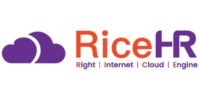Subtitle: Navigating the Decision-Making Process for Optimal Payroll Efficiency
In the realm of business operations, payroll management stands as a critical function, directly impacting employee satisfaction, regulatory compliance, and overall financial health. As organizations strive for efficiency, the decision between outsourcing payroll services and maintaining in-house processing remains a pivotal choice. This blog post delves into the pros and cons of both approaches, guiding businesses through the decision-making process for optimal payroll management.
Outsourcing Payroll: Pros and Cons
Pros:
- Expertise and Compliance: Payroll service providers specialize in tax laws, regulations, and compliance matters. Outsourcing ensures that professionals well-versed in these intricacies handle payroll, reducing the risk of errors and ensuring adherence to changing regulations.
- Time and Resource Savings: By outsourcing payroll, organizations free up valuable time and resources that can be redirected towards core business activities. This can lead to increased productivity and a more focused approach to strategic initiatives.
- Access to Advanced Technology: Payroll outsourcing often comes with access to cutting-edge payroll software and technology. This not only streamlines processes but also reduces the risk of technology obsolescence, which can be a concern for in-house systems.
- Reduced Liability: Payroll service providers assume a degree of liability for errors or compliance issues. This can be a significant relief for organizations, mitigating the financial and legal consequences of payroll mistakes.
Cons:
- Cost Considerations: While outsourcing can save time, it may come at a cost. Organizations need to weigh the fees charged by service providers against the potential savings from reduced errors and increased efficiency.
- Loss of Control: Outsourcing means relinquishing some control over the payroll process. Organizations may feel less hands-on in managing their payroll, which could be a concern for those who prefer direct oversight.
In-House Payroll Processing: Pros and Cons
Pros:
- Control and Customization: In-house processing provides organizations with greater control over the entire payroll process. It allows for customization based on specific organizational needs and the flexibility to implement changes quickly.
- Direct Oversight: Organizations that prefer a hands-on approach to payroll management may find in-house processing more appealing. Direct oversight allows for immediate response to issues and a thorough understanding of the organization’s unique payroll requirements.
- Cohesive Integration with HR: When payroll is managed in-house, it can be seamlessly integrated with other HR functions. This integration facilitates a cohesive approach to human capital management, enabling better alignment of payroll with broader HR strategies.
Cons:
- Resource Intensiveness: In-house payroll processing demands significant time and resources. Managing payroll internally requires skilled staff, ongoing training, and investments in technology, which may be burdensome for smaller organizations.
- Increased Risk of Errors: Without specialized expertise, organizations run the risk of making errors in payroll calculations, tax withholdings, and compliance. These errors can lead to financial repercussions and damage to employee trust.
- Technology Upkeep: Maintaining up-to-date payroll software and technology can be a continuous challenge. In-house systems may require regular updates and investments to stay current, adding to the overall cost of payroll processing.
Making the Decision: Factors to Consider
- Organizational Size and Complexity: Smaller organizations with straightforward payroll needs may find in-house processing more manageable, while larger enterprises with complex payroll structures might benefit from the expertise of outsourcing.
- Budget Constraints: Budget considerations play a crucial role in the decision-making process. While outsourcing may have fees, in-house processing incurs its own set of costs, including staff salaries, software, and training expenses.
- Risk Tolerance: Organizations must assess their risk tolerance. Those prioritizing risk mitigation and compliance may lean towards outsourcing, while those valuing hands-on control may opt for in-house processing.
- Strategic Focus: Consider where the organization wants to allocate its focus. If the priority is on core business activities and strategic initiatives, outsourcing may be the preferable choice. In-house processing may be more suitable for organizations with specific customization needs.
Conclusion: Finding the Right Fit for Your Organization
The decision between outsourcing payroll and maintaining in-house processing is nuanced and depends on various factors unique to each organization. While outsourcing brings specialized expertise and efficiency, in-house processing offers control and customization. Ultimately, organizations must carefully weigh the pros and cons, considering their size, budget, risk tolerance, and strategic priorities. Whichever path chosen, the goal remains the same: to establish a payroll management strategy that aligns with the organization’s objectives, promotes financial health, and ensures employee satisfaction.
